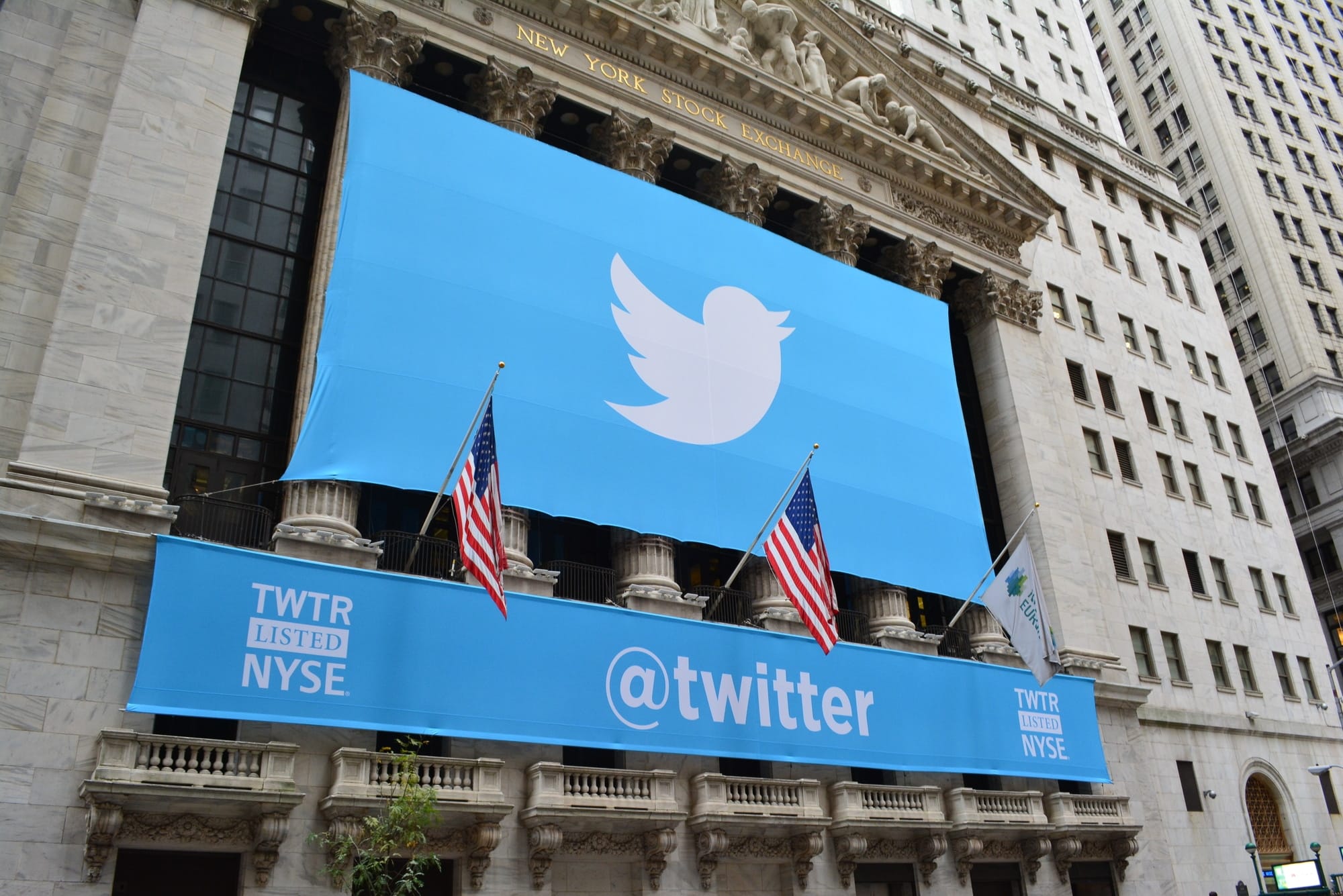“Let me tweet that real quick” is a sentence we have become very familiar with over the past many years. It instantly reminds us all of Twitter, this magnanimous platform where it takes seconds for anything to blow up. Twitter was founded in 2006 as a microblogging and social networking website by four very talented individuals. The first tweet went up by the CEO Jack Dorsey, “just setting up my twitter.”
Initially, the site was supposed to be a platform to share SMS-like messages online, short and brief. But since its advent, it has developed into something that has become almost larger than life itself. Over the past decade or so, Twitter has come up as a significant influencer in both domestic and international politics. It has transformed into an outlet for breaking news and viral pieces of information; once anything goes on Twitter, everybody hears about it. This massive and drastic change in the way that Twitter is now used has come mostly from the understanding of celebrities and public figures alike that they can use the platform to directly speak to the masses, which is why it has become a major propaganda tool as well.
Today, Twitter has around 330 million active followers and sees almost 500 million tweets come out per day. An outlet with such an overwhelming online presence is bound to have its drawbacks as well.
To undertake an understanding of the pros and cons of the site, we consider a SWOT analysis.

X (Twitter) Strengths
- Hashtags: The most vital aspect of Twitter as a platform happens to be one of its most notable features: hashtags. They showcase a vast influence on making anything pertinent and spread it all around in a matter of seconds. The trending hashtags serve a huge role in this regard. Some great examples of this come from recent years: the #MeToo movement and the call to #DefundThePolice both blew up through the usage of Twitter hashtags to an extent where they have become common knowledge now.
- Market Share: The market share of Twitter has grown substantially over the past few years to reach 25.45%. This position gives it considerable power in the tech industry. The platform has also managed to stabilize its financial situation. In the year 2019, Twitter had an annual revenue of $3.46 billion.
- Marketing: Twitter has quickly gained popularity as a place for news and marketing. Important political figures all have an extensive fanbase on Twitter, and it is named a significant component in B2B Marketing.
- Brand: Twitter has developed itself into a brand. The logo, name, mascot (bird), and color (blue) of it are instantly recognizable by everyone, which is a massive factor in its success. Everybody knows what Twitter is, and its logo will stand out anywhere: it is almost impossible to escape it. Twitter has, in a nutshell, developed a powerful image of itself that everyone is aware of.
- The Huge Influence: The site has acquired a considerable amount of influence since it started in 2006, and this impact has become highly evident, especially in the past few years. As the tech industry has grown, so has the influence of social media sites like Twitter. Twitter currently has more than 400 million active users, and this audience is made up of not just Millenials but Baby Boomers as well, which are not seen much on competitor sites like Snapchat or TikTok. Although the audience of Twitter might be limited if put in comparison with Facebook, many brands or people still use it extensively for marketing purposes. We have also seen companies pick up Twitter trends and turn them into marketing gimmicks of their own.
X (Twitter) Weaknesses
- Limitations: Twitter has a limit on the number of characters in a tweet as well as tweets per day. Each tweet is limited to 280 characters, and each account is limited to 2400 tweets per day; semi-hourly intervals are used to break down this limit further.
- Cybercrime: Spamming, cyberbullying, and other forms of cybercrime are also prevalent on Twitter, despite strict regulations against such acts. The site tries its best to protect accounts against such activities, but some malice is bound to get by on a platform of this scope. Spamming also raises the question of bots and fake accounts, which Twitter has plenty of. Not only are fake accounts hard to eradicate, but they can also be hard to recognize in the first place. Tackling such problems, especially those related to online harassment or abuse, is very hard, even for platforms like Twitter. Multiple celebrities and notable public figures have had to face online harassment on Twitter which has put dents on its famed image.
- Dependence on Controversial Leadership: X’s operations are heavily influenced by Elon Musk’s leadership style, which is often confrontational and polarizing. His public comments and actions can exacerbate tensions with local authorities, leading to potential legal and financial risks for the platform.
- Example: In 2024, the legal battle in Brazil, where Musk’s refusal to comply with local laws and his public criticism of a top judge, has put X at risk of being shut down in one of its largest markets. This incident underscores how Musk’s controversial leadership can have serious consequences for the company’s global operations.
- Misuse of the Platform: We all know that Twitter plays a significant role in the mobilization of people, but the concern comes up when it is used to mobilize people for all the wrong reasons. A great example is the Twitter account of ISIS, by using which the organization managed to get people to visit the Islamic State for recruitment purposes.
- Revenue Model: The revenue model of Twitter is heavily centered around ads, which is where the site derives most of its earnings form. This weak form of financing is more concerning considering that Twitter has increasing operational costs due to money being put into the expansion of data centers. Putting these two aspects of an unstable revenue model and high operational costs, we notice that Twitter has not been able to procure any big profits, especially if compared to Facebook. Instead, it has lost money and has had a net annual loss of over millions of dollars which is highly worrying considering its current pace. However, high costs and an outdated revenue model are not problems that cannot be fixed. If it is brought up on the agenda and Twitter starts focusing on efficient resource allocation and developing a more sustainable revenue model, it might just work out.
- Lack of Creativity: Many say that the platform has failed to bring any noteworthy innovation forth and has an algorithm that dissatisfies many of its consumers. Twitter has also failed to protect users’ data on certain occasions, resulting in leakages of private information to third parties like advertisers.

X (Twitter) Opportunities
- Inspiration: Twitter can seek inspiration from competitors like Instagram to come up with enhanced features. If they do so, it will add to user satisfaction. The site can use more decisive security protection steps to increase user satisfaction as well. The platform has decreased its spending on innovation and research in the previous years, which has shown a visible impact on its performance. Despite that, I think Twitter has many opportunities to turn this around because, in today’s tech-driven age, it is elementary to find new, innovative, and creative ways to uplift its traditional directions.
- Targeting New Areas: The site can also target new user groups if it ups its marketing strategies and other strategies that it uses to enhance user engagement and experience. This can also be done through diversification. If Twitter starts expanding and branching out into newer dimensions of growth and revenue building, it can derive significant benefits.
- Financial Developments: As mentioned before, if the site manages to develop a better-suited revenue model for itself, it can indeed come at par with competitors like Facebook, which has succeeded a lot because of its revenue-generating methods.
- Ad Revenue: Twitter can opt for mobile-friendly ads that will add to its revenue and help with profit maximization. The opportunities in this direction are limitless if only the company starts thinking about it.

X (Twitter) Threats
- Competition: Twitter has remarkably huge competition in the market in the form of social media sites like Facebook. Snapchat, TikTok, etc. These sites can steal users from Twitter which has not brought on any changes to appeal to the younger audience and remains popular primarily within the older generations. This competition places enormous pressure on the site to invest more money in marketing and innovation, which then can be turned into an opportunity as well, so it can work both ways.
- Pressures of Regulation: Twitter also faces pressure from investors that can affect its functioning as an independent entity. Governments even opt for curbing the freedom of expression on the platform, which takes away from its real purpose. Specific other regulatory pressures are placed on Twitter as well, which have increased ever since the Facebook Data Leakage Scandal, which caused people to be warier of social media sites and their claims of data protection.
- Security Concerns: People now want to know precisely what their data is utilized for by these sites because nobody wants more instances like the election rigging scandals involving user data. Most of the tweets go out from influential people and have a higher reach due to their number of followers; hence Twitter unequally distributes power. Scandals like these always result in a loss of the attraction of these social media sites, with many people advocating for a social media detox or ‘cleanse’ in a way. Developments like these can have a very negative impact on the audiences of platforms like Twitter. People have now started prioritizing their privacy and consent way, way above an online presence. This has also added to the pressure on social media sites to continually reassure people that their data is not being compromised in any way whatsoever. But not only do people are now getting increasingly vary about the promises of these sites, but this whole discourse has also given rise to a plethora of conspiracy theories regarding what these sites use our data for.
- Dropping Profits: Lastly, the fact that Twitter has diminishing profits is also a constant threat in a world driven by inflation. An international phenomenon like currency fluctuation also impacts the revenue generation of Twitter.
Twitter SWOT Analysis: Conclusion
If we look at the bigger picture, Twitter is a trademark in the land of social networking, a market that it has dominated for a long time. It still has its distinct feature and vibe that people only come to Twitter for. Twitter has managed to acquire a brand image that is associated with it and hard to replace.
But at the same time, the team behind the social media giant needs to be conscious of the fact that they have to keep up with the changing trends of digital media if they want to retain their popularity.
There is no doubt that Twitter has already made its place in front of its old audiences, who do not seem to have any plans to leave it but to sustain itself, Twitter has to branch out to newer areas and target broader audiences well.
If Twitter starts adapting to the requirements of the new social age and the feedback of its customers, it can still go a long way. But without these conditions, the future of the social media tycoon seems to be in hot waters.
These changes make up a "phase" that all social media sites go through. Some are unable to keep up with the challenges of the changing dynamics of social media and hence lose their popularity and die out. The example of myspace is enough to showcase this. Whereas other sites like Facebook and Instagram have managed to keep themselves afloat throughout these challenges and have completely rebranded themselves. Instagram today is nothing like what Instagram used to be five years ago, and so the list goes on.
The chances of Twitter completely dying out are minimal due to its unique value propositions. However, it does risk losing its popularity if it does not adapt to what is required of it. Hence, the best-case scenario for Twitter is to start thinking about these changes.









